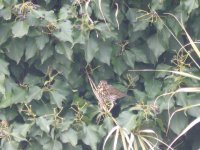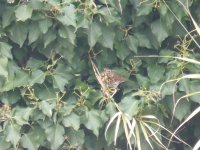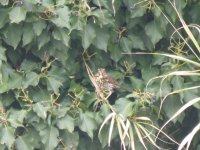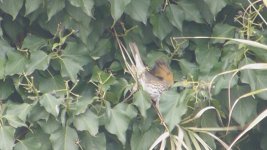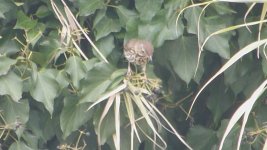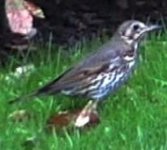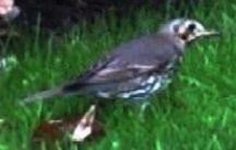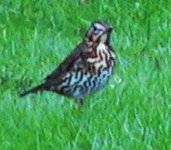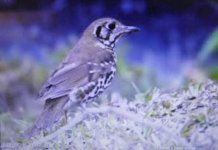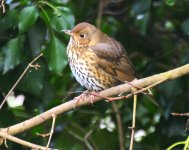An interesting image Dimitra_v
I presume that you don’t have any profile shots of the head pattern? Which to my eye is most interesting, in as much as the apparent open clear face pattern
which I’ve seen only once before in the UK and imaged, with most examples being indistinct in having a darker tonal wash over the face and falling within a narrow variance norm.
I’ve observed this face pattern (your bird) on a few images taken from overwintering Song Thrush in the Middle East which almost certainly emanate from Siberia.
When myself and a colleague encountered the UK bird in October 2008 we were somewhat taken aback by it’s appearance so much so, that we researched Song Thrush and my colleague found reference to a 19th century Russian ornithologist “Sergei Buturlin“ who on various expeditions into Siberia, had “found” a putative race of Song Thrush which he called “Natalie“, although promoted as such it was never widely accepted?
On the strength of this information albeit incomplete, myself and Charles Fentiman visited Tring Herts. where we studied the many skins on display and found a particular bird that had been procured in Verkhoyansk, Siberia during the late 19th century, which showed a remarkable resemblance to the imaged 2008 UK bird.
This may all be a subjective coincidence however...if there are any Soviet ornithologists “out there”, that might be able to shed some light on Sergei Buturlin’s “Natalie”....ie what did it look like and from what part of Siberia was it procured?
I for one would be most interested.
PS.... Images 1-3 the 2008 London bird, 4th image is Chinese Song Thrush and 5th image nominate T.philomelos for comparison.
Cheers





